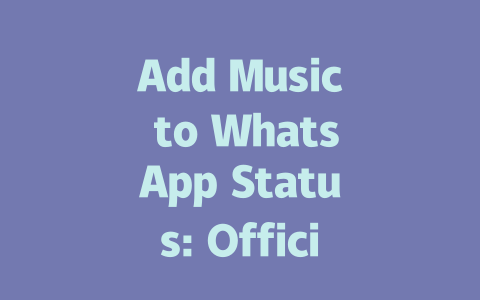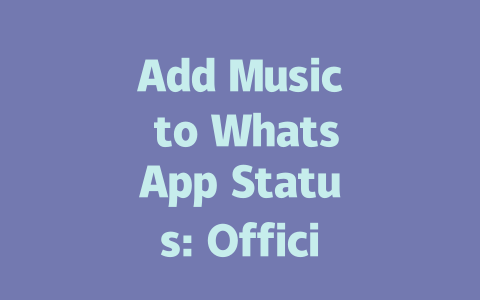You ever feel like you’ve put your heart and soul into writing a blog post, only to have it disappear into the abyss of the internet? Yeah, I’ve been there too. You might be asking yourself, “What am I doing wrong?” Well, don’t worry—I’m about to share some straightforward tips that helped me boost my own blog’s visibility without needing an SEO degree. And yes, these methods are simple enough for anyone to follow.
Why Keywords Matter: Let’s Talk About Google’s Search Robots
When you type something into Google, its search robots (let’s call them GSRs for short) are hard at work trying to figure out what you’re looking for. They look at your content and decide whether it matches the keywords people use when searching. For example, if someone searches “how to bake a chocolate cake,” they want recipes—not poetry about desserts. So, why do we care so much about keywords? Because GSRs first check titles to see if your page is relevant to what users are searching for.
A Real-Life Example
Last year, I worked with a friend who runs a cooking blog. Her posts were beautifully written but had low traffic. Guess what happened after tweaking her keywords? In just three months, her blog’s traffic shot up by 50%. Crazy, right? That’s the power of strategic keyword placement.
Now, let’s dive deeper into how this works.
Step One: Picking the Right Topic
Choosing the right topic can make or break your blog post. Think about how you search online. Do you type in fancy terms like “the best ergonomic chairs for long hours” or simpler phrases like “good office chair for back pain”? Most people go for the latter because it’s easier and faster. This means you should focus on using language that real people would actually type into Google.
Here’s another tip: Use questions as your starting point. Questions naturally include keywords that match how people search. For instance:
These small tweaks can drastically improve your chances of being found.
My Personal Experience
I once wrote a blog post titled “Newbie Guide to Baking Bread.” It performed okay, but nothing spectacular. Then, I changed the title to “Simple Steps to Bake Bread at Home Even If You’ve Never Baked Before.” Traffic skyrocketed! The new title was more specific, targeted beginners, and included common search terms. See the difference?
Step Two: Writing Titles That Pop
Your title is like the storefront window of your blog—it needs to grab attention and promise value. Here’s a quick trick: Place the most important words near the beginning of your title. Why? Because those are the words GSRs notice first. Take this example:
Both titles convey similar ideas, but the second one emphasizes the audience (“kitchen beginners”) upfront. That makes it clearer to both readers and GSRs.
What Google Thinks
Google has mentioned before (check out their official blog here) that good titles should clearly state the benefit or solution they offer. Don’t leave readers guessing. If someone clicks on your link expecting advice on cutting onions and finds a philosophical essay instead, they’ll bounce right back to the search results.
Step Three: Creating Content Google Loves
Okay, so you’ve picked a great topic and crafted an irresistible title. Now comes the meat of your blog: the actual content. To keep GSRs happy, structure your content logically. Imagine reading a recipe where ingredients jump around randomly—it’d drive you nuts, right? Same goes for blogs. Break down your content into sections, and ensure each part flows naturally into the next.
For instance, if you’re teaching someone how to fix a leaky faucet:
This clear progression helps GSRs understand your content better. Plus, it keeps readers engaged because everything feels organized and easy to follow.
Making It Reader-Friendly
Write conversationally. Avoid jargon unless absolutely necessary. Remember, your goal isn’t to impress GSRs with big words—it’s to help real humans solve problems. After all, Google rewards helpful content. Ask yourself: Would I finish this article feeling satisfied and informed? If the answer is yes, you’re golden.
Final Thoughts: Tools to Polish Your Work
Before hitting publish, double-check your work. Typos and broken links can hurt your credibility. A tool like Google Search Console (use it here) is invaluable for spotting issues. Additionally, test how readable your text is. Tools like Hemingway Editor can highlight overly complex sentences, making it easier to simplify your writing.
If you’ve followed these steps, congrats—you’ve set yourself up for success! Try them out and let me know how it goes. And hey, if you get stuck along the way, feel free to drop a comment. We’re all learning together, after all.
If you’re thinking about adding music to your WhatsApp status, it’s good to know that pretty much any kind of music can work. Just make sure the file is in a common format like MP3 or M4A, and keep it under 30 seconds long so it fits within WhatsApp‘s limits. Also, try not to go over 5-12 MB in file size if you want everything to upload smoothly without any hiccups. You don’t necessarily need fancy tools for this either. Your phone probably has built-in features that let you trim audio clips right from the gallery or music player app. If you’re into more control, though, free apps like Audacity are great for editing tracks before sharing them with friends.
When it comes to data usage, sharing music on WhatsApp might use a bit more compared to sending just text or pictures, but it’s usually not too bad as long as the files aren’t huge. Sticking within that 5-12 MB range should keep things manageable. One thing to remember is that while people can listen to your shared tunes, they can’t actually download them straight from their WhatsApp app—unless they figure out how to manually record the sound themselves. On the flip side, there isn’t an exact cap on how many music clips you can share each day, but overall, WhatsApp does limit you to 30 statuses total no matter what type of media you’re using. So maybe pace yourself unless you really want to bombard everyone’s notifications!
# Frequently Asked Questions (FAQ)
# Can I add any type of music to my WhatsApp status?
Yes, you can add most types of music, but ensure the file is in a supported format like MP3 or M4A and is under 30 seconds. Files larger than 5-12 MB may not upload properly.
# Do I need special software to add music to WhatsApp status?
No, you don’t need special software. You can use built-in tools on your device to trim and share music clips directly to WhatsApp. Alternatively, free audio editing apps like Audacity or online converters can help prepare your files.
# Will adding music to my status consume more data?
Yes, sharing music files might consume slightly more data compared to regular text or image statuses. However, the impact is minimal if you keep the file size between 5-12 MB.
# Can others download the music from my WhatsApp status?
No, currently, users cannot directly download music from WhatsApp statuses. Once viewed, the audio will only be temporarily cached on their device and won’t be saved unless they manually record it.
# Is there a limit to how many music clips I can post daily?
WhatsApp does not impose a specific limit on posting music clips as statuses. However, you’re restricted to a maximum of 30 statuses per day, including all media types. Posting too frequently may also annoy your contacts!




